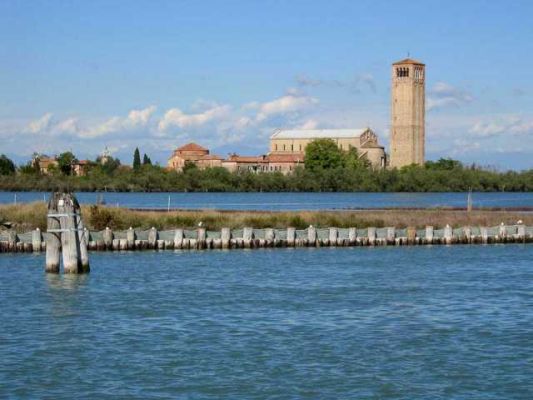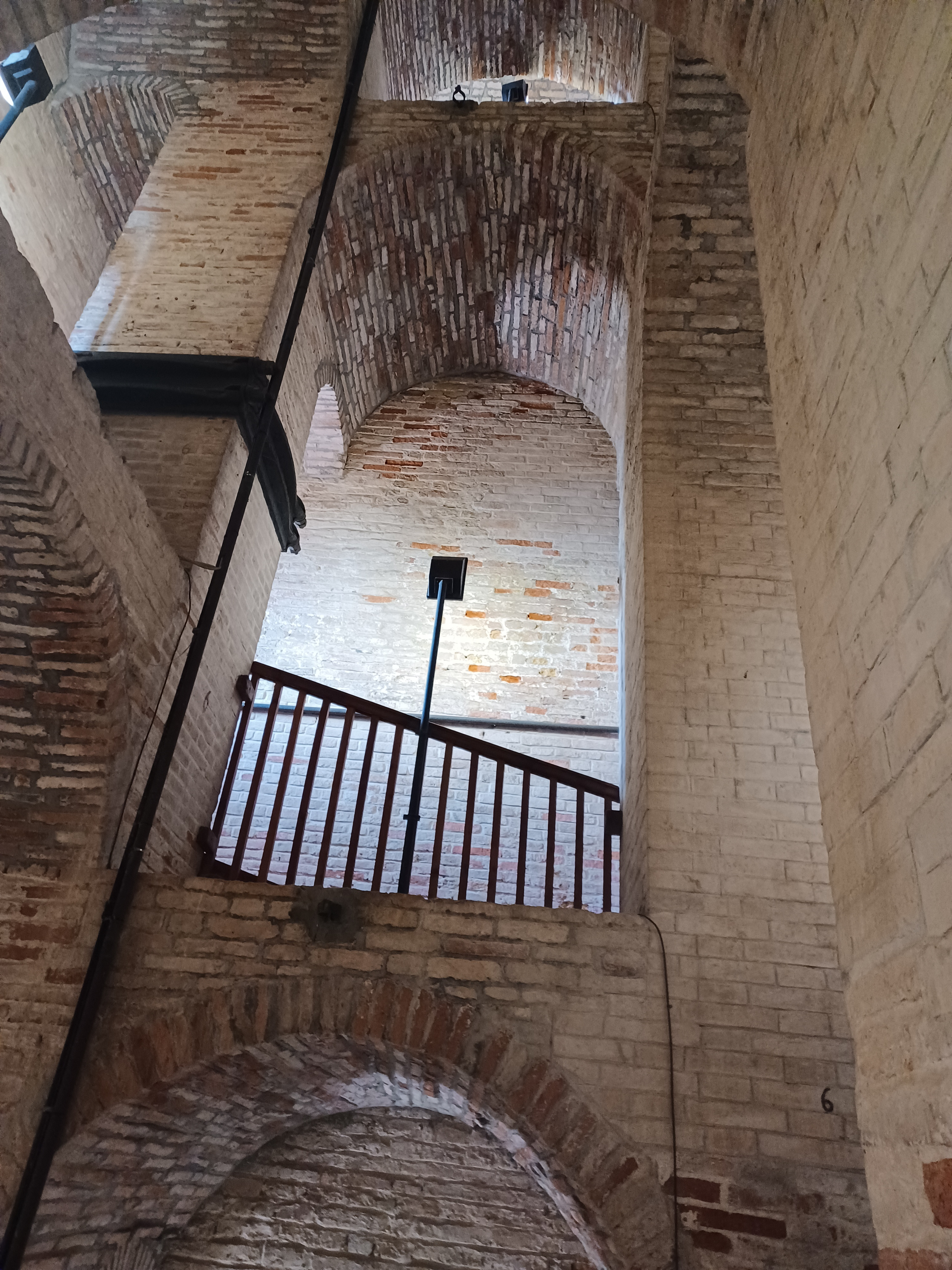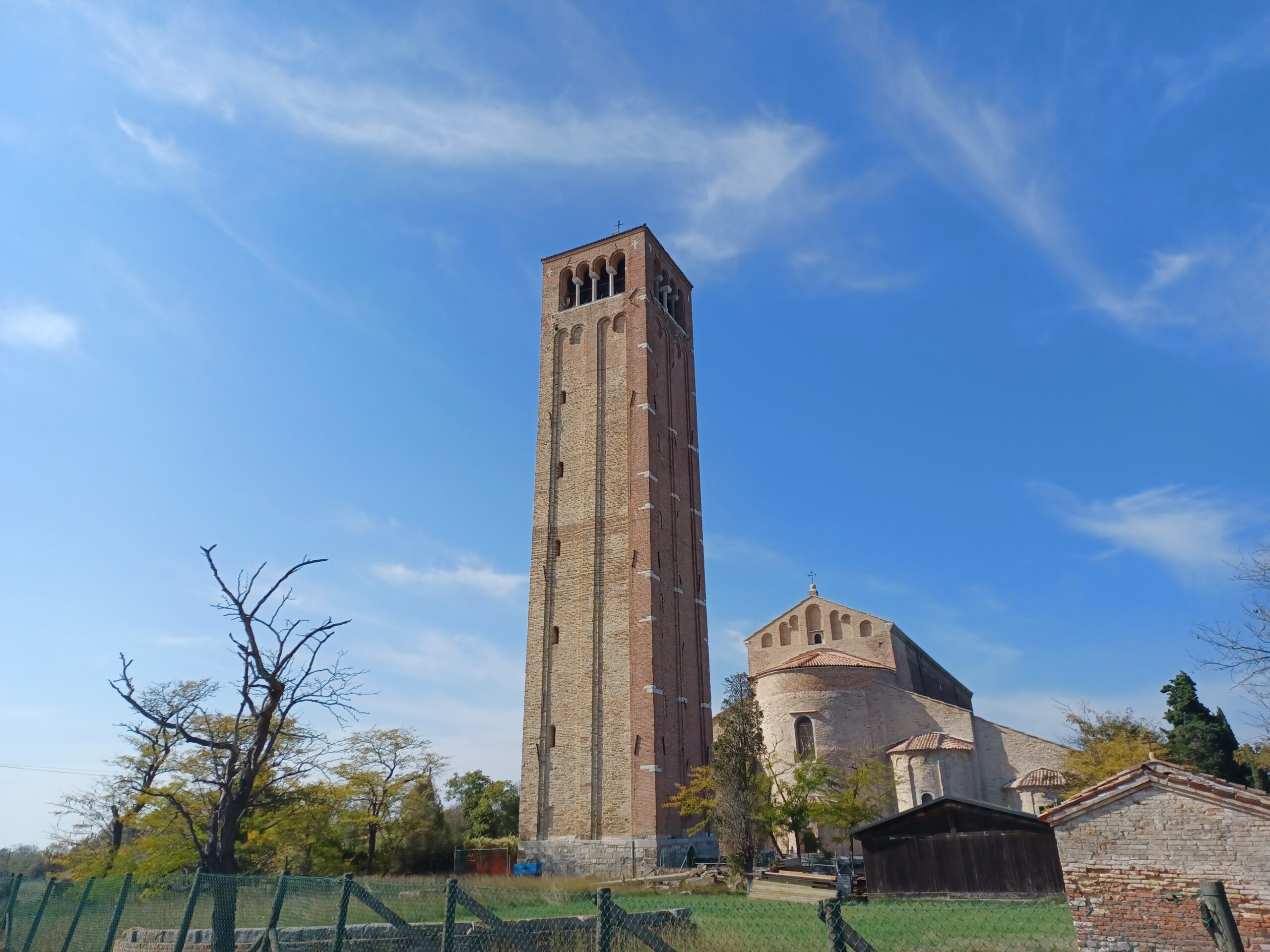Torcello, often referred to as the first Venice, was settled in the 5th century by refugees fleeing barbarian invasions. Seeking safety in the inaccessible mudflats of salt marshes in the middle of a lagoon, these early settlers laid the foundations of a thriving community against all odds.

However, plagues, malaria, and increasing difficulty in accessing the island due to silt and growing swamps led to its decline. By the 14th century, the population had largely relocated to what is now Venice, leaving Torcello almost entirely abandoned.

A Historic Vantage Point
Today, the freestanding bell tower on this tranquil, semi-deserted island offers a glimpse into Torcello’s rich history. The view from the campanile has inspired some of history’s greatest writers. In the mid-1800s, English art historian John Ruskin vividly described the scene in his seminal work, The Stones of Venice. He depicted the landscape as “one of the most notable scenes in this wide world of ours,” painting a picture of a wild, lifeless moor with ashen-grey colors and corrupted sea-water channels.

Ruskin’s detailed observations guide viewers to gaze upon snow-capped mountains to the east, the Adriatic Sea to the west, and the distant towers and palazzi of Venice across the lagoon.

Henry James, visiting not long after Ruskin, imagined Torcello as a boneyard, describing it as a “moldering vestige” of Venice’s mother-city, akin to “weather-bleached parental bones left impiously unburied.”
In 1948, Ernest Hemingway sought refuge on Torcello from the bustling Venetian social scene. During his stay, he often climbed the campanile, binoculars in hand, contemplating his journey and future destinations as he took in the panoramic view.

Visiting Torcello Today
Practical Information
To visit Torcello, take Vaporetto line 12 from Fondamente Nove. The island’s key sights, including the campanile, are about a quarter-mile walk from the vaporetto stop along the main canal. While exploring, imagine the rich history and literary reflections that have been inspired by this unique vantage point.


